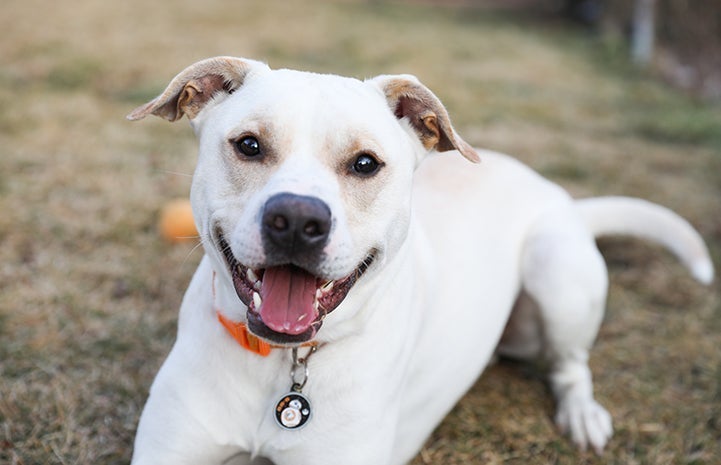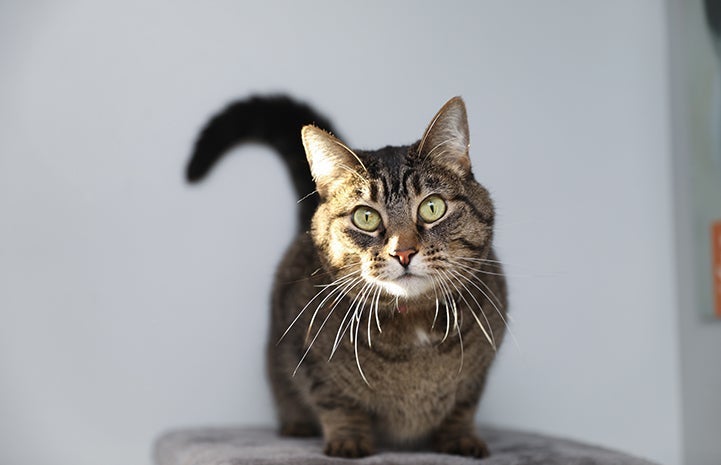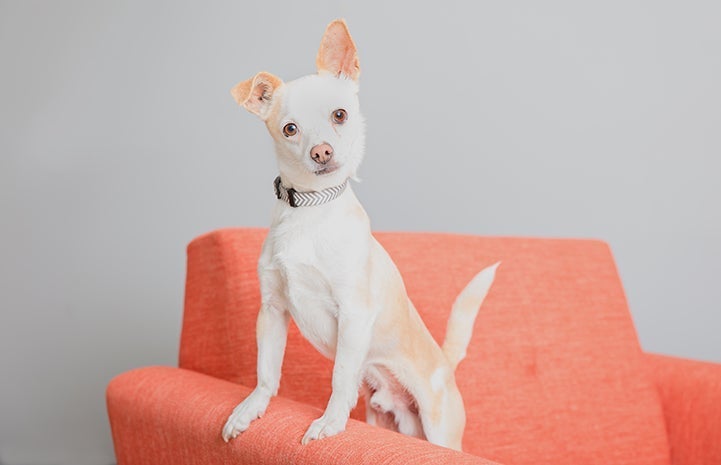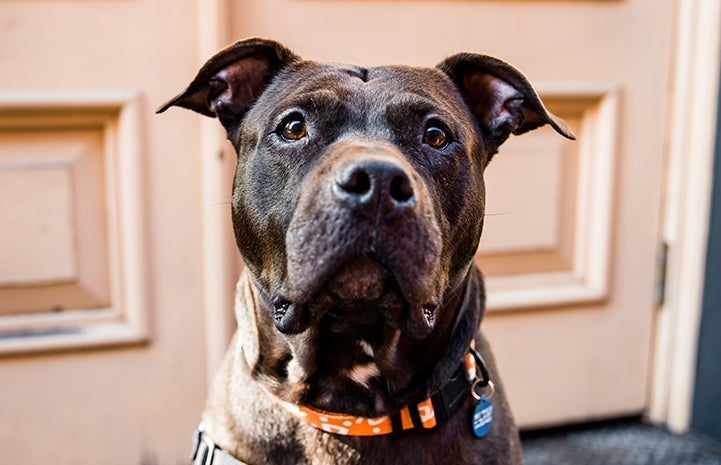
Rehoming a Pet: Finding a Good New Home
Have you found a stray dog or cat, or do you need to find a new home for your pet? This comprehensive guide to rehoming a pet will show you how to get the word out. We’ll talk about how to create an effective flyer, how to take a good photograph of the pet, and how to write imaginative text (to capture the attention of a prospective adopter) for a flyer or take advantage of the networks already established to advertise your animal online.
We'll then discuss the preparation of the pet: making sure that the animal’s vaccinations are up to date, that the pet is healthy, and that all relevant information is ready to be passed on to the adopter.
We'll also walk you through the very important counseling process to make sure all the basic needs of the pet will be met in the pet’s new home. Finally, we'll provide information on how to finalize the adoption and offer some words of encouragement in your quest to rehome a pet.
Table of contents
1. What to do when you’ve found a stray
2. How to get the word out when rehoming a pet
3. How to prepare the pet for adoption
4. How to screen potential adopters
5. Meeting the potential adopter
6. Finalizing the adoption
7. Some final words of advice and encouragement
1. What to do when you've found a stray
Check for a tag or microchip
If you’ve found a stray animal, first check for a tag on them. If there is a tag and a person's name is on it, call and arrange for a pickup. If the tag gives the name of a veterinarian’s clinic, call during business hours and get the name and phone number of the pet's family using the code number on the tag. Then follow up to return the pet.
If the animal has no tag, there might still be a way to identify them if they've been microchipped. Contact your local shelter or a veterinarian to get the pet scanned with a microchip scanner.
If there’s no tag or microchip, put a temporary tag on the animal with your name and phone number. You can use a luggage label or even tape the information around the collar with some duct tape.
Notify your local animal shelter
There are different laws in each city regarding stray animals. In some communities, finders of lost animals are legally required either to surrender the animal to the animal shelter or to report to the shelter that they have a stray animal. Check with your local animal control or animal services department to find out what your legal obligations are.
Even if you’re not legally required to notify the shelter, you’ll still want to let them know that you have a stray and provide a photo and relevant information about the pet. If the family of the animal is looking for their pet, they will most likely start by calling the shelter. So it’s very important that the shelter knows that you have found the pet. Also, some shelters have bulletin boards on which people can list lost and found pets, so it’s a good idea to post a photo of the pet at the shelter.
If you have some hesitation about trying to find the pet's family, keep in mind that just because an animal is injured, scared, or without identification does not mean that the animal has a “bad” home. Your stray might have lost their identification; they might have been lost for a long time.
If you do take the pet to the shelter and you wish to adopt them if they're not claimed, be sure to let the staff know that. After the stray hold period is up, you will have adoption privileges. It is a good idea to call the shelter daily to let the staff know that you are interested in the animal’s welfare.

Make every effort to find the pet's family
Besides notifying your local shelter, you’ll want to check lost-and-found ads on social networks like Facebook and NextDoor or even in the local newspapers. Also, post a photo and information about the pet on your social networks. Another good strategy is to put up flyers in the vicinity where the animal was found. Don’t forget to give your phone number and/or email address.
A typical ad describes the type of animal, the location where the animal was found, and the coloring and other distinct characteristics of the animal. Most people do not try to claim animals who are not their own. With that said, you could leave out one crucial characteristic of the pet so that when someone calls claiming to be the pet's family, you can verify that the animal really belongs to that person.
2. How to get the word out when rehoming a pet
If you do need to find a new home for a pet or rehome your own pet, you’ll want to advertise as widely as you can — in as many places as possible. Creating a flyer is a great way to start when rehoming a pet. Here’s what to put on the flyer:
- The appearance, size, and age of the animal
- The pet’s name and a good photograph of the pet (see below for more info)
- Whether the pet is spayed or neutered
- The pet's nature and appealing qualities
- Any limitations the pet has (e.g., pulls a bit on leash, chases cats)
- Your phone number and the times you can be reached
Make digital flyers and share them on your social sites as well as neighborhood or pet groups. Also, print out copies of the flyer and post them throughout your community wherever prospective adopters might see them. Ask to put them up at veterinarians’ offices, pet supply stores, and the workplaces of your family and friends. Places like supermarkets, libraries, and health clubs often have community bulletin boards where anyone can post flyers.

Tips for taking good pet photosBecause photos really help people make a connection to an animal, you’ll want to use a good-quality photograph. Color is best. (If you don’t have a color printer, stores with printing services can print the flyers for you.) To take a good pet photo, use a background that is in contrast to the animal to highlight their best features. Keep the photo simple and clear with few background distractions, though you might want to use a person, a hand, or some other means to show the scale of the pet. Before snapping the photos, take the time to get the pet as calm and relaxed as possible, so the photos don’t show an animal who looks anxious or scared. Ideally, the photo you choose for the flyer should have the eyes of the animal in focus. |
But don’t stop with posting flyers when trying to rehome a pet. There are many other ways to spread the word:
Home starts with you
- Contact as many shelters and rescue groups as possible. Most animal organizations will be near or at (or even over) capacity, but they might allow you to bring your pet to one of their adoption days. They also might be able to put you in contact with someone who is looking for the kind of pet you are trying to place, or they could have some other suggestions. You can find local shelters and rescue groups by searching the listings on the Best Friends Network.
- Contact breed rescue groups if you’re trying to place a specific breed. If you have a pug or a Persian cat, for example, there might be rescue groups or clubs that have lists of people looking to adopt that particular breed. Some breed rescue groups might even be willing to place a mix, as long as the animal is close to purebred. You can find local listings of breed rescue groups by doing an online search — e.g., Siamese + breed rescue + Montana.
- Post the pet’s photo and bio online. Try posting on adoption websites such as AdoptAPet.com, as well as your own and your friends’ social media channels. You can also do a classified ad in your local newspaper if that makes sense in your community.
- Use any and all of your community contacts. Ask friends and family to mention the animal in their social groups; send an email about the pet through your office memo system; post a notice and photo on your social media groups; or share some flyers with members of clubs or associations to which you belong. Don't underestimate the word of mouth.
- Get the pet out there. (This works especially well with dogs.) The more your pet interacts with people, the more likely they will charm the right person. If you’re trying to place a dog, take them on walks, to pet supply stores, to the local park. Put a colorful bandana on the dog that says, “Adopt me.”
Sample pet biosBetty Lou has a new pair of shoes, and she is ready to walk right into your heart! Betty is a 2-year-old spayed female terrier mix. She loves to dance, prance, and play. She is a doll! She is good with cats as well. Call Kelly or Doug at 555-3576 after 7 p.m. weekdays or all day Sunday. . . . . Joe Cocker is coming to town and wants to sing for you. Joe is a 3-year-old neutered male cockapoo with a great personality. Loves kids and dogs, but isn’t as keen on cats! He has had all his shots. Call Morris after 6 p.m. at 555-4674. . . . . Persian cat with attitude. Martha thinks she rules the world! She is gorgeous and knows it. She loves to sit on laps and be petted. She would prefer a home where she is the only cat. See her at the Petco on Broadway on Saturday, June 10 from 10 a.m. to 4 p.m. Ask for Beth. . . . . Shambu is the kind of companion that we all long to have. Loyal, playful, tender, and kind best describe this beautiful orange tabby. He is 3 years old, neutered, and has had all his shots. He prefers an adults-only home. Call Jeremy at 555-2189 before 11 a.m. any day. Donation for my favorite animal charity required. |
3. How to prepare the pet for adoption
It’s a good idea to bring the animal to a veterinarian for a thorough checkup. If you can have the pet spayed or neutered, even better. It will be easier to place the pet if they've been seen by a veterinarian prior to adoption and are spayed or neutered.
You should also prepare a general history. Include as much information as possible about the pet’s likes and dislikes, current food preferences and favorite treats, relationship to other animals, and preferred types of toys. All this information will help the adopter get acquainted with the pet and make the transition easier on the animal.
To show the pet’s best side, it’s always good to groom and bathe them before taking your flyer photos and before showing the pet to a prospective adopter. If it is relevant and you have the ability to do so, talk to a trainer about the pet’s disposition. The help of an experienced and caring professional can often help you resolve quirky or destructive behavior, making it easier to rehome the pet.

4. How to talk to potential adopters
When people respond to your post about rehoming your pet, you’ll want to talk to them on the phone before introducing them to the animal. By discussing the animal and expectations with potential adopters on the phone, you can save time.
Best Friends Animal Society adoption philosophyAs you prepare to talk to potential adopters, it might be helpful for you to know some details of how we at Best Friends Animal Society view our own adoption process. Philosophy: Everyone who walks through our doors is a potential adopter. We want to provide clients with everything they need to become better-equipped pet caregivers, and if they have little experience with pets, those clients leave more prepared for that responsibility. We don’t look for reasons not to adopt to people. Rather, we try to proactively give our clients all they need and want in the process of selecting a new pet, while offering the joyful experience of adopting a companion animal. Tone: It is critical that the adoption process be a positive experience for pet adopters. Throughout the process, your tone must be friendly and enthusiastic. You should smile, congratulate them on making a great choice, thank them for choosing adoption, and in general be upbeat about the adoption. People should leave feeling happy with the pet they selected and about deciding to adopt a pet from us. Preparation: Time should be put into getting to know the animals available for adoption. Greeting people and commenting in a friendly way about the animals and asking about what kind of animal they want to adopt is the best way to approach people. Asking open-ended questions (questions that can’t be answered with yes or no) is the best way to get people talking. If you can determine early in the conversation what their preferences are, you can best prepare them for an adoption or find out that it is not a match. Be sensitive to the individual’s reactions. |
The following is a list of questions to ask the prospective adopter. You might want to take notes as you talk to the person. From the answers to these questions, you can start to understand the needs of the person. Try to ask the questions in a conversational style, so it doesn’t sound like you’re conducting an interview. To start, you might say: “Would you mind if I asked you a few questions about yourself and your home?”
What best describes your experience with having a pet? Try to get a picture of the prospective adopters’ level of experience with pets. This is a starting point to how you will interact with each of them.
- If they have never had a pet, you know right away that they will need all the basics (information about feeding, exercise, vaccines, vets, etc.).
- If it has been over a year since they’ve had a pet, they might need some reminders on the basics.
- If they have had a similar pet or currently have a pet, they should have the basics down, so your focus will be more on the match of the animal with the new home.
How would you describe your household? Understanding the prospective adopter’s home life (e.g., hectic, calm, quiet, noisy) will help you assess whether the pet will succeed in that new environment. For example, it might not be ideal to put a shy pet in a home with someone who wants a socially active pet and also has young kids. However, keep in mind that even though you might be correct that this isn’t the ideal lifestyle for the pet, we do not know how animals will act in different environments.
How many pets do you currently have and what types? If they have other pets, we recommend setting up a meet and greet, so your pet can meet the prospective adopter's pets before adoption.
What are the ages of your current pets? Knowing the ages of potential adopters’ current pets is also helpful for the matching process. Discuss the levels of energy the current pets have. For instance, if adopters are considering adding a puppy or kitten to a household with a senior dog or cat, talk with them about the need to be sensitive to the difference in energy level and the need to pay plenty of attention to their current pet.
Are your pets current on their vaccinations? It’s important that vaccinations are up to date and that pets see a veterinarian on a yearly basis and as needed. Remember that people inexperienced with pets might not know that pets need vaccines annually or that kittens and puppies need a series of vaccines.
What types of pets will be visiting your home? If the pet is a frequent visitor, we recommend a meet and greet prior to adoption to maximize the success of the adoption.
Where will the pet live? Asking about where the pet will live helps you understand how prospective adopters might regard the pet. Garages can contain substances (e.g., antifreeze) that are hazardous for dogs and cats. Also, you want to make sure that the pet will be safe being in a yard if unattended.
What sort of pet are you looking for? Asking this question helps you understand what prospective adopters need or are seeking in a pet. Examples of more specific questions:
- How social of a pet do you want? Do they want a pet who likes to be held a lot, who loves to play, who stays by their side?
- How vocal of a pet do you want? Some people love chatty pets; some don’t. If the prospective adopter lives in an apartment, a very vocal pet could cause issues with the neighbors.
- How quickly do you hope the pet will adjust to your home? This is an opportunity to help prospective adopters understand that it can take time — even weeks to months — for a pet to adjust to new people and a new environment.

5. Meeting the potential adopter
Once you have talked to the potential adopters, you will have a pretty good idea about whether they are interested in adopting and providing the pet with care, shelter, and companionship.
The next step is to meet the people and introduce the animal. You have some choices about where to conduct the introduction. The prospective adopters could come over to your place, you could take the pet to theirs, or you could meet on neutral ground like a park or a vet’s office.
If the potential adopters have cats, meeting in their home is best. If the prospective adopters have a dog and you are placing a dog, a park could be a good place for a first meeting. Taking a walk with the dogs is a great introduction method. Wherever the meeting takes place, you will want to observe closely how the people relate to the pet and how the pet relates to them.
6. Finalizing the adoption
If you decide to go ahead with the adoption, you might want to finalize it with an adoption contract, which can be a safety net for both you and the adopter. (If you post the pet on AdoptAPet.com, the site provides an adoption contract.)
Make two copies of the contract, and both of you can sign them. Leave one with the adopter, and take one with you. Also, remember to hand over any medical and vaccination records plus any special food, bowls, toys, or bedding.
7. Some final words of advice and encouragement
As you go through the process of rehoming a pet, keep in mind that creativity, persistence, and a positive attitude are usually rewarded. Think about the best possible environment for the pet, and explore all the options you can think of. Try not to get discouraged, and don’t give up after just one or two interviews.
Finding a new home for a pet can take some work and some time. But if you persevere, you are sure to be successful. We hope that the advice we've given here helps you to place the pet.
Best Friends, other animal welfare groups, and many concerned individuals have used the process described here to rehome thousands of dogs and cats. So if you’re feeling discouraged, just remember: It can be done. People find new homes for pets every single day, and you can do it, too. We wish you the very best.

